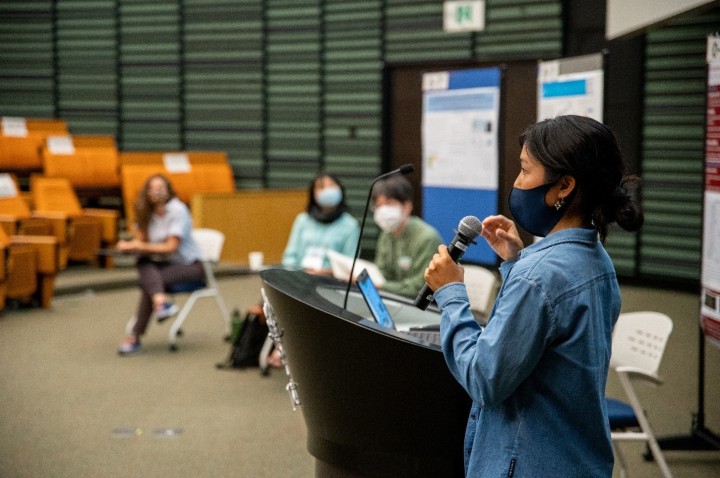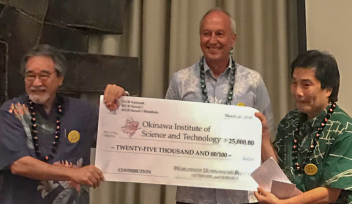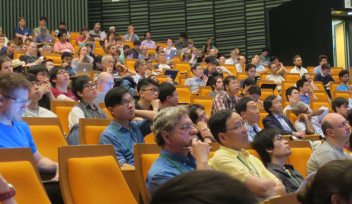A green and blue planet: Ecology symposium highlights need for collaborations

On April 6th and April 7th, the Okinawa Institute of Science and Technology Graduate University (OIST) hosted the first OIST-RIKEN Joint Symposium, which was focused on the ecological research being undertaken by the two institutes.
This follows an agreement that was signed by the two institutes last year, which sort to promote academic, scientific, and technological advancements and the development of human resources in Japan and the world. The benefits of the two institutes collaborating closely were emphasized throughout the symposium. In contrast to OIST, which is often highlighted for being small, new, and international, RIKEN is a large scientific institute that was founded in 1917 and now has around 3,000 scientists on seven campuses across Japan.
This symposium was designed to, not only feature ecological research, but to explore and facilitate interdisciplinary approaches to the huge challenges that confront the environment around the world. The main speakers showcased the cutting-edge technology and research whilst also sharing their ideas.
OIST Provost, Dr. Mary Collins, opened the symposium. “We are confident that this is the way in which more collaborations will start. Further, this is a great chance to discuss how science can tackle the United Nations Sustainable Development Goals.”

RIKEN executive director, Dr. Hidetoshi Kotera, stated that, “science is divided into small areas and every researcher is going their own research. Nowadays, science and technology are so advanced, and we use equipment and technology to overcome challenges. If we collaborate, we can find solutions faster and reach the next research target more easily.”
He emphasized that this symposium was the first step to creating collaborations and associations for the future through mutual understanding and the exchange of knowledge.

On the first day, researchers from OIST and RIKEN took turns to present their research, covering topics from whale shark biology, to the biodegradability of plastic, to the genomics of jellyfish. The day was split up by breaks and poster sessions, which further facilitated discussion around these topics.

On the second day, the symposium divided into three and attendees chose the session that best suited their interests, either ‘Protection of Environment,’ ‘Ecosystems & Biodiversity,’ or ‘Climate Change and Geoscience.’ These workshops were centered around shorter presentations from early career researchers and facilitated by two discussion leaders. This allowed postdoctoral researchers and PhD students to receive advise and present their works to the public. Questions from the audience allowed for further discussions and generated many ideas for future research.

The symposium concluded with a wrap-up session where the researchers agreed that many successful discussions had taken place and that there was a need for continued collaboration in the future.
OIST’s Dean of Research, Prof. Tadashi Yamamoto, said, “This was a very successful symposium with good interactions and clear presentations. It’s important that we continue having symposia like this. RIKEN is the biggest institution in Japan in natural science, there’s a lot of knowledge and great opportunities for OIST scientists to meet researchers in the same field. This was especially seen in the workshops where everyone discussed common interests that can be explored in the future.”
Prof. Yamamoto emphasized that, going forward, OIST scientists should aim to build up their network with other researchers around Japan. He’s hoping to continue to strength OIST’s relationship with RIKEN as well as other universities in Okinawa and in the mainland.
For press enquiries:
Press Inquiry Form


















